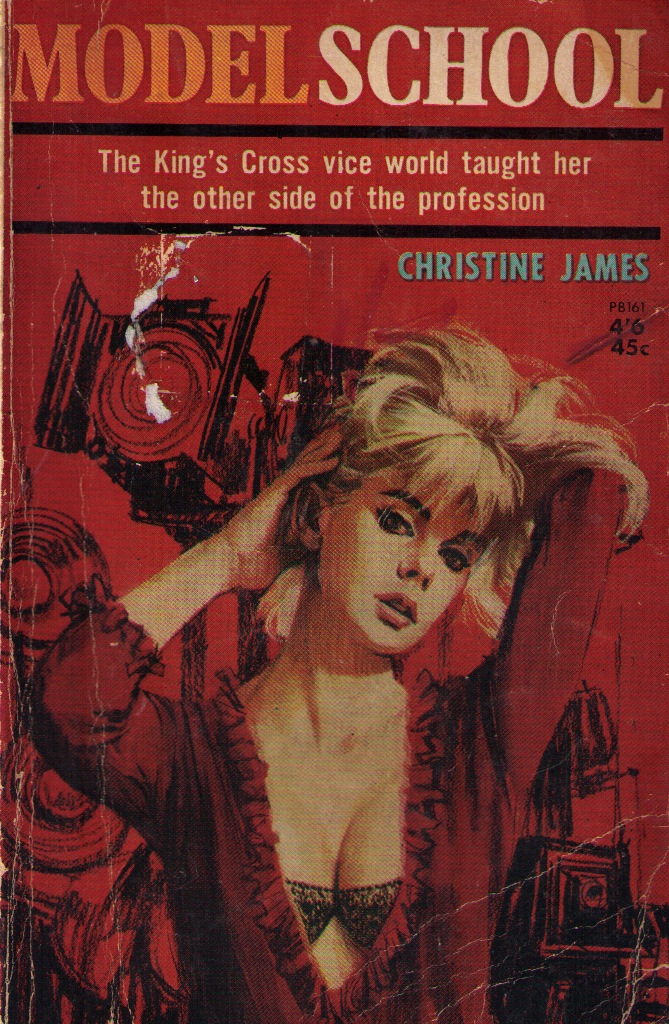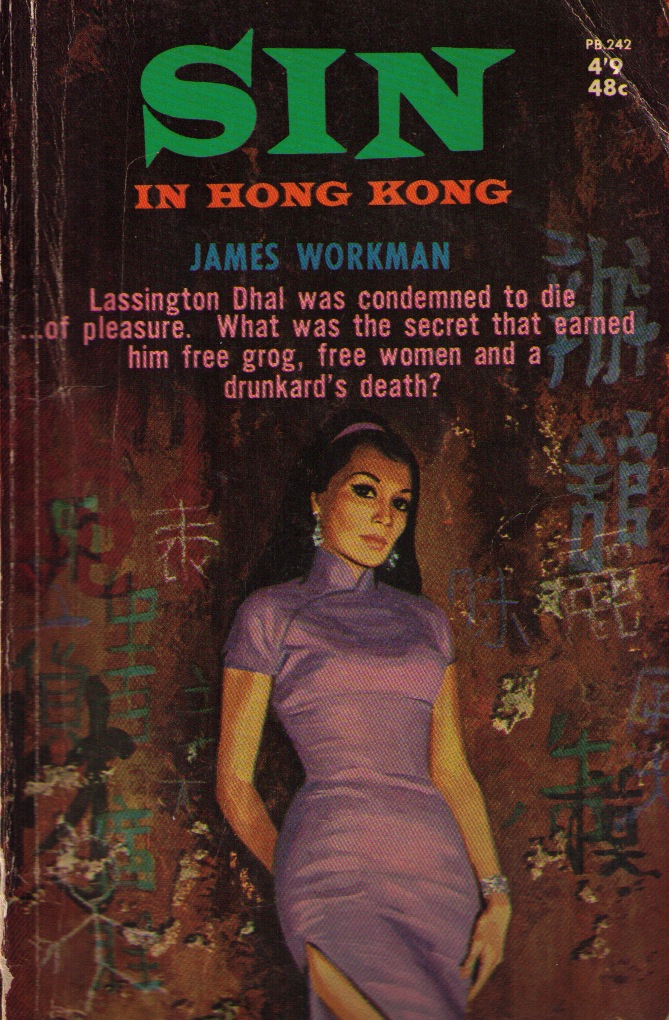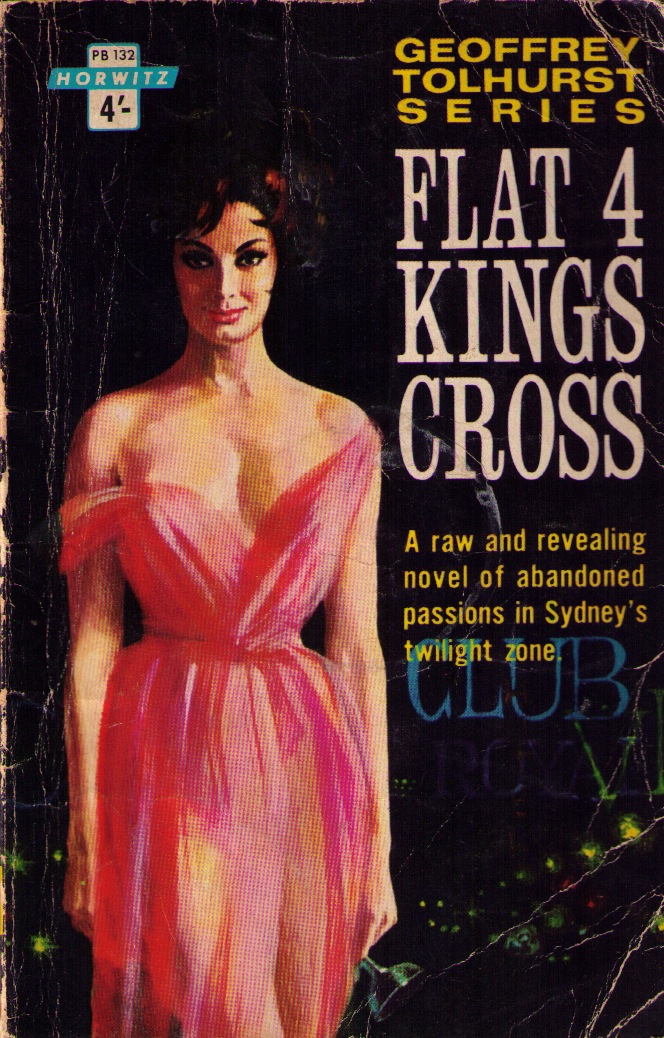Search
-
Recent Posts
- Dishing up Pulp Curry in a new way: why I am starting a Substack newsletter
- Book reviews: Deadly dames, midcentury Brit pulp and 1970s science fiction
- Mackenna’s Gold (1969): Gold, Ghosts and Frontier Violence
- Orphan Road book launch
- Orphan Road now available
- Pre-orders open for my new novel, Orphan Road
- Cover reveal: Orphan Road, my follow up to Gunshine State
- Breakfast in the Ruins podcast: New English Library Bikermania
- Why 1973 was the year Sidney Lumet took on police corruption
- Men’s Adventure Quarterly: Gang Girls issue
Categories
- 1960s American crime films
- 1970s American crime films
- 1980s American crime films
- 1990s American crime films
- Adrian McKinty
- Albert Dekker
- Andre De Toth
- Angela Savage
- Angie Dickinson
- Anthony Zerbe
- Asian noir
- Australian crime fiction
- Australian crime film
- Australian noir
- Australian popular culture
- Australian pulp fiction
- Australian television history
- Ava Gardner
- Beat culture
- Belmont Tower Books
- Ben Wheatley
- Billie Whitelaw
- Black pulp fiction
- Blaxsploitation
- Book cover design
- Book Reviews
- British crime cinema
- British pulp fiction
- Bryan Brown
- Burt Lancaster
- Carter Brown
- Charles Durning
- Charles Willeford
- Chester Himes
- Christopher G Moore
- Christopher Lee
- Cinema culture
- Claude Atkins
- Coronet Books
- Crawford Productions
- Crime Factory
- Crime Factory Publications
- Crime fiction
- Crime fiction and film from Africa
- Crime fiction and film from Cambodia
- Crime fiction and film from China
- Crime fiction and film from India
- Crime fiction and film from Indonesia
- Crime fiction and film from Japan
- Crime fiction and film from Laos
- Crime fiction and film from Latin and Central America
- Crime fiction and film from Malaysia
- Crime fiction and film from New Zealand
- Crime fiction and film from Scandinavia
- Crime fiction and film from Singapore
- Crime fiction and film from South Korea
- Crime fiction and film from Thailand
- Crime fiction and film from the Philippines
- Crime Fiction and film set in Vietnam
- Crime film
- Dangerous Visions and New Worlds Radical Science Fiction 1950 to 1985
- David Goodis
- David Peace
- David Whish-Wilson
- Derek Raymond
- Diana Dors
- Dirk Bogarde
- Don Siegel
- Don Winslow
- Donald Westlake aka Richard Stark
- Dystopian cinema
- Ernest Borgnine
- Eurocrime
- Fawcett Gold Medal Books
- Femme fatale
- Fernando Di Leo
- Filipino genre films
- Film Noir
- Forgotten Melbourne
- French cinema
- French crime fiction
- Garry Disher
- Gene Hackman
- George V Higgins
- Georges Simenon
- Ghost Money
- Giallo cinema
- Gil Brewer
- Girl Gangs, Biker Boys and Real Cool Cats: Pulp Fiction & Youth Culture, 1950-1980
- Gloria Grahame
- Gold Star Publications
- Gregory Peck
- Gunshine State
- Heist films
- Horror
- Horwitz Publications
- Humphrey Bogart
- Ian Fleming
- Interviews
- Ira Levin
- James Caan
- James Crumley
- James Ellroy
- James Hadley Chase
- James Woods
- Jim Brown
- Jim Thompson
- Joel Edgerton
- John Frankenheimer
- Joseph Losey
- Karen Black
- Kerry Greenwood
- Kinji Fukasaku
- Larry Kent
- Laura Elizabeth Woolett
- Lee Marvin
- Leigh Redhead
- Lindy Cameron
- M Emmet Walsh
- Mad Max
- Mafia
- Malla Nunn
- Martin Limon
- Megan Abbott
- Melbourne International Film Festival
- Melbourne Writers Festival
- Men's Adventure Magazines
- Michael Caine
- Michael Fassbender
- Mickey Spillane
- Monarch Books
- Ned Kelly Awards
- Neo Noir
- New English Library
- Newton Thornburg
- Noir Con
- Noir fiction
- Non-crime reviews
- Oren Moverman
- Orphan Road
- Ozsploitation
- Pan Books
- Parker
- Paul Newman
- Peter Boyle
- Peter Corris
- Peter Strickland
- Peter Yates
- Poliziotteschi
- Pulp fiction
- Pulp fiction in the 70s and 80s
- Pulp fiction set in Asia
- Pulp Friday
- Pulp paperback cover art
- Qui Xiaolong
- Raymond Chandler
- Richard Burton
- Richard Conte
- Robert Aldrich
- Robert Mitchum
- Robert Ryan
- Robert Stone
- Rock Hudson
- Roger Smith
- Rollerball
- Rosaleen Norton
- Roy Scheider
- Rural noir
- Sam Levene
- Sam Peckinpah
- Samuel Fuller
- Science fiction and fantasy
- Scripts Publications
- Sidney Lumet
- Sidney Poitier
- Simon Harvester
- Snowtown
- Snubnose Press
- Spies
- Stanley Baker
- Sterling Hayden
- Steve McQueen
- Sticking it the the Man Revolution and Counter Culture in Pulp and Popular Fiction 1950 1980
- Stuart Rosenberg
- Tandem Books
- Tart noir
- Tartan Noir
- Ted Lewis
- Toni Johnson Woods
- True crime
- Vicki Hendricks
- Victor Mature
- Vintage mug shots
- Vintage pulp paperback covers
- Wallace Stroby
- War film
- Westerns
- William Friedkin
- Woody Strode
- Yakuza films
- Yaphet Kotto
Nothing but noir
Recommended reading
The lurid world of pulp
- 20th century Danny Boy
- American Pulps
- Bear Alley
- Bloody, Spicy, Books
- Comics Down Under
- Everything second hand
- Existential Ennui
- Greenleaf Classic Books
- Irv O. Neil's Erotica is My Trade
- Killer Covers
- Lost Classics of Teen Lit 1939-1989
- Luminist Archives
- Men's Pulp Mags
- Mporcius Fiction Log
- Murder, Mayhem and Long Dogs
- Neglected Books
- Nocturnal Revelries
- Paperback Warrior
- Paperbacks of the Gods
- Pop Sensation
- Pulp artists
- Pulp Covers
- Pulp Crazy
- Pulp Flakes
- Pulp International
- Pulp Magazines Project
- Pulp Serenade
- Realms of the Night
- Romance Fiction Has a History
- Rough Edges
- Sin Street Sleaze
- Spy Guys and Gals
- The department of Afro American Research Arts & Culture
- The Dusty Bookcase
- The Haunted World of Richard Sala
- The Moon Lens
- The Nick Carter & Carter Brown Blog
- The Pulp & Paperback Fiction Reader
- Too Much Horror Fiction
- True Pulp Fiction
- Vault of Horror
- Vintage Nurse Romance Novels
- Vintage Romance Novels
- Welcome to the Pan Paperback
- Yellow and Creased
Support This Site
If you like what I do please support me on Ko-fi
Category Archives: Australian pulp fiction
Pulp Friday: interview with Iain Mcintyre, author, Sticking it to the Man!
Today’s Pulp Friday is a fascinating interview with Melbourne-based social historian Iain McIntyre, author of a new book, Sticking it to the Man! Pop, Protest and Black Fiction of the Counterculture, 1964-75.
Sticking it to the Man! is a roller coaster ride through the lava lit streets of the counter-cultural pulp fiction of the late sixties and early seventies, a time when hippies, bikers, swingers and revolutionaries replaced cops and private detectives as pulp’s stable characters.
The book contains 130 reviews of pulps from the period covering all the major sub-themes: drug use, bikers, sleaze, blaxsploitation, hippies and dystopian science fiction. It also includes the covers in all their dog eared, price marked glory. It’s through books like this that the hidden history of pulp fiction is gradually pieced together. Sticking it to the Man! is a must read for every serious pulp fiction afficiando.
You can buy Sticking it to the Man! here. Copies will also be on sale at the launch of Crime Factory’s Hard Labour anthology, this coming Monday, October 8. Iain will also be talking about his book at the launch.
What is it about pulp fiction between 1964 and 1975, the period covered in your book that you find so interesting?
I’ve long had an interest in troublemakers, militants and odd-balls, and this was a period in which those normally relegated to the margins were able to have a major impact on culture and society.… Read more
Posted in Australian pulp fiction, Chester Himes, Gold Star Publications, New English Library, Ozsploitation, Pulp fiction, Pulp Friday, Pulp paperback cover art, Robert Stone, Scripts Publications, Vintage pulp paperback covers
Tagged 1964-75, Blaxsploitation pulp, Carl Ruhen, Chester Himes, Counter cultural pulp fiction, Dave Wallis, Dog Soldiers, Dykes on Bikes, Gil Scot-Heron, Give Me Money, Gold Star Publications, Harlan Ellison, Horwitz Publications, Iain McIntyre, Joe Haldeman, John Brunner, John Love, Michael Moorcock, Only Lovers Left Alive, Operation Hang ten, Patrick Morgan, Protest and Black Fiction of the Counterculture, Robert Stone, Scripts Publications, Sex A-Go-Go, Sticking it to the Man: Pop, The Crucifiers, The Final Programme, The Forever War, Ursula K Le Guin, William Bloom
Pulp Friday: Model School
“The King’s Cross vice world taught her the other side of the profession.”
Today’s Pulp Friday offering is a wonderful example of local pulp fiction from the early sixties, Model School by Christine James, released by Horwitz Publications in 1965.
The early sixties were a turning point for the Australia’s pulp paperback industry, when publishers stopped relying purely on reprints of overseas material and stories set offshore, and started releasing locally set stories by Australian writers.
The setting for much of this work was Sydney’s Kings Cross, which during the sixties, seventies and eighties was Australia best-known center of drug use and prostitution.
Prostitutes, beatniks, con men, drug dealers, bent cops, organized crime lords, innocent tourists and American servicemen on leave all rubbed shoulders in ‘the Cross’ as it is referred to locally. To this, local pulp authors added Chinese Triad gangs enslaving white women, witches and warlocks and a host of other less believable characters.
Like so many of the Australian pulp I feature on my site, I have not been able to find anything out about the author, Christine James, if, indeed this was her or his real name.
Model School is a fairly typical example of the Kings Cross pulp of the early to mid-sixties.
“The phoney model racket.… Read more
Interview: Australian pulp fiction historian Toni Johnson Woods
 Dr Toni Johnson Woods is someone I’ve been keen to interview on this blog for a while now.
Dr Toni Johnson Woods is someone I’ve been keen to interview on this blog for a while now.
A Research Fellow at University of Queensland, she is passionate about Australian books. Not just capital ‘L’ literature, but the local mass produced pulp fiction of the forties, fifties and early sixties, the existence of which has all but disappeared from our collective cultural memory.
Her commitment to the cause of local pulp includes having listened to hours of popular radio serials (Carter Brown Mystery Theatre and Larry Kent’s I Hate Crime), scanned thousands of pulp fiction covers and read every nearly all 300 Carter Brown novels.
She very generously agreed to answer the following questions about her work by e-mail.
What attracted you to researching pulp fiction in the first place?
One very unremarkable day I was chatting with colleagues in the tearoom. As you can imagine our conversations are very lofty – not. I asked the most basic question: who is Australia’s most popular author.
Well, we batted that around for several minutes arguing about what “popular” means, i.e. best selling, most widely read, most known author. All of these things are not the same. The discussion then turned to what is an Australian author, i.e. someone who was born in Australia?… Read more
Posted in Australian crime fiction, Australian pulp fiction, Carter Brown, Horwitz Publications, Interviews, Larry Kent, Pulp fiction, Toni Johnson Woods, Vintage pulp paperback covers
Tagged Alan G Yates, Bleeck Collection, Carter Brown, Cleveland, Erskine Caldwell, Gordon Clive Bleeck, Horwitz Publications, Larry Kent, Mickey Spillane, Signet, Toni Johnson-Woods
Pulp Friday: Sin in Hong Kong
“Lassington Dhal was condemned to die of pleasure. What was the secret that had earned him free grog, free women and a drunkard’s death?”
Today’s Pulp Friday is a wonderful specimen of Asian themed Australian pulp fiction, Sin in Hong Kong by James Workman, published by Horwitz Publications in 1965.
You can almost smell the polluted water of Kowloon Harbour and feel the beer sweat oozing from the pores of this book. The combination of the cover illustration and the suggestive title do a wonderful job of evoking a sense of the mysterious, sleazy Orient, one of the mainstays of pulp publishing in the fifties and sixties. Criminals, Communists, Asians. What’s the difference? Remember, this was 1965. The Cold War was in full swing, Vietnam was just starting to wind up, Australia was years away from recognising Red China, fear and ignorance of Asia was widespread (and it could be argued in some quarters still is).
As is the case with nearly every local Australian pulp cover I present on this site, I’ve no idea who did the art work for Sin in Hong Kong.
James Workman appears to have been one of the many house pseudonyms used by Horwitz. In this case, the real author appears to have been well known Australian novelist James Edmond MacDonnell.… Read more
Pulp Friday: Flat 4 Kings Cross
“A raw and revealing novel of abandoned passions in Sydney’s twilight zone.”
Today’s Pulp Friday book is Flat 4 Kings Cross, by Geoffrey Tolhurst, published by Horwitz Publications in 1963.
As I’ve previously written on this site, the early to mid-sixties was the transition point during which the Australian pulp publishing industry stopped relying completely on reprints of overseas titles and stories and characters set in the US, and started to pump out stories set locally.
As was the case in the UK and America, much of this was kitchen sink and exploitation fiction, often dressed up as lurid exposés of drug use and sexual promiscuity. These fed off mainstream society’s fears of youth rebellion and changing sexual standards. The setting for much of this work was Sydney’s Kings Cross, which during the sixties, seventies and eighties was Australia best-known center of drug use and prostitution.
Prostitutes, beatniks, con men, drug dealers, bent cops, organized crime lords, innocent tourists and American servicemen on leave all rubbed shoulders in ‘the Cross’ as it is referred to locally. To this, local pulp authors added Chinese Triad gangs enslaving white women, witches and warlocks and a host of other less believable characters.
Flat 4 Kings Cross is a great example of this sub-genre of Australian pulp. … Read more























